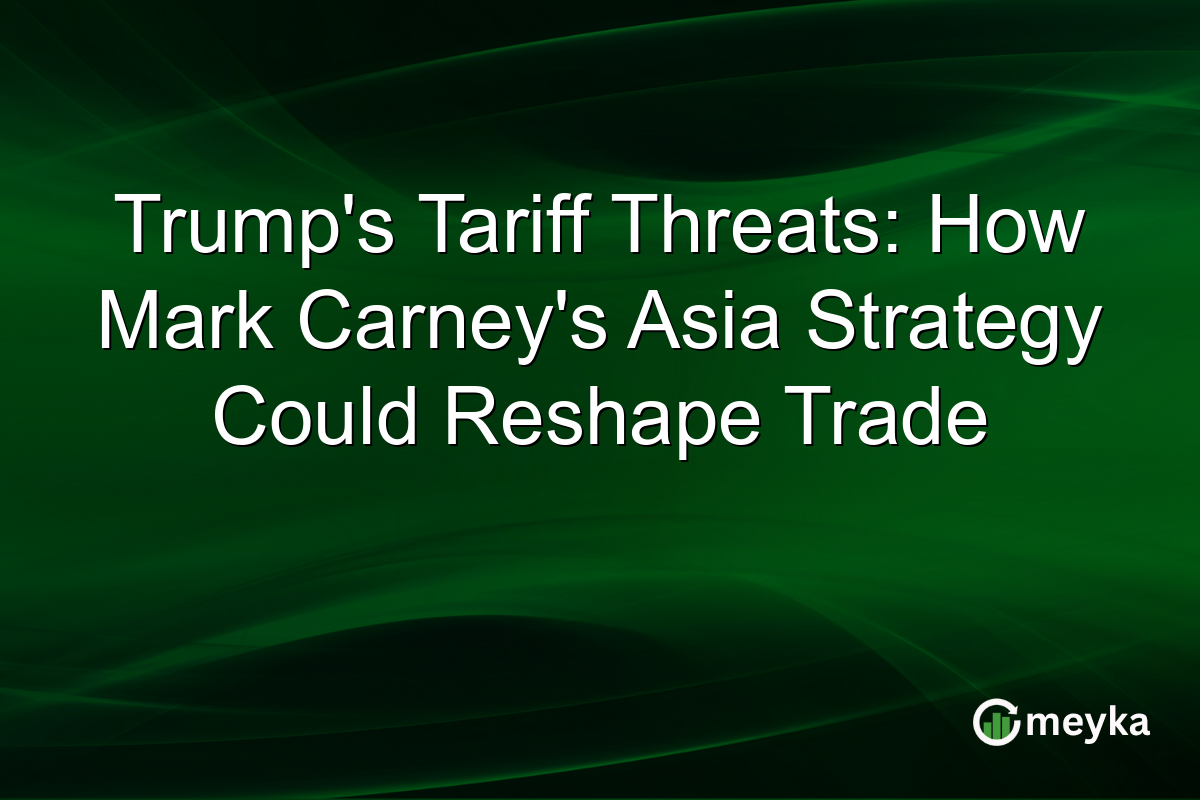Trump’s Tariff Threats: How Mark Carney’s Asia Strategy Could Reshape Trade
As trade tensions escalate due to President Trump’s tariff threats, Mark Carney’s Asia trade strategy emerges as a pivotal shift for Canada. Historically, Canada’s economy relies heavily on the United States, with over 75% of its exports heading south. However, Carney’s approach seeks to diversify this economic dependency by strengthening ties with Asia-Pacific markets, particularly within ASEAN. This move not only aims to mitigate risks but also to capitalize on emerging opportunities in Asia’s growing economies.
Mark Carney’s Asia Trade Strategy
Mark Carney’s focus on diversifying Canada’s trade is strategic and timely. By directing efforts toward Asia, Canada hopes to tap into a region projected to drive 60% of global growth by 2030. The ASEAN nations, known for their rapid development and industrial growth, present an enticing opportunity for Canadian exporters. This shift seeks to balance trade relations, reducing Canada’s reliance on US markets. Carney’s initiatives include increasing export incentives and establishing trade offices in key Asian cities to facilitate business connections. According to The Star, this could reshape not only economic interactions but also reinforce diplomatic and cultural ties.
Implications of Trump’s Tariff Threats
President Trump’s recent tariff threats pose significant challenges for global trade, particularly for Canada-US trade relations. Tariffs have previously been used as leverage, pressuring Canada in renegotiations. However, such tactics have pushed Mark Carney to explore alternative markets. By pivoting toward Asia, Canada may reduce its exposure to US economic volatility. This strategic pivot could shield Canadian industries from sudden tariff impacts, offering a more stable long-term growth path. This demonstrates Carney’s proactive response to unpredictable US policy shifts and positions Canada advantageously in the global market.
ASEAN Trade Relations: Opportunities and Risks
Engaging with ASEAN nations offers substantial growth prospects for Canada, yet it comes with complexities. ASEAN’s combined GDP surpasses $2.8 trillion, providing a lucrative market for diverse Canadian exports. However, regional geopolitical tensions and varying regulatory environments pose challenges. Mark Carney’s strategy must navigate these intricacies, ensuring trade policies align with both Canadian and ASEAN interests. Establishing productive partnerships will require ongoing diplomacy, cultural understanding, and economic cooperation. The benefits, if managed well, include expanded market access and increased economic resilience for Canada in a volatile global economy.
Final Thoughts
Mark Carney’s ambitious strategy to engage Asia represents a significant shift in Canada’s economic policy. By reducing dependence on the US market through diversified trade relations, Canada positions itself to thrive amidst increasing global trade tensions. This strategic move could protect Canada from the uncertainties of Trump’s trade policies. As Canada strengthens its ties with ASEAN countries, it not only unlocks new economic potential but also stabilizes its trade networks, preparing for a future where diversified markets are key to sustainable growth.
FAQs
Canada aims to diversify its economic ties, reducing dependency on the US. Asia’s emerging markets, particularly within ASEAN, offer new growth opportunities, aligning with global economic shifts.
Trump’s tariffs heighten economic unpredictability for Canada-US trade. By diversifying into Asia, Canada seeks stability and growth outside US influence, mitigating risks of US policy instability.
Engaging ASEAN involves navigating geopolitical tensions and diverse regulatory landscapes. Successful partnerships demand cultural understanding, diplomatic effort, and alignment of trade policies.
Disclaimer:
This is for information only, not financial advice. Always do your research.






